1954 Wheat Penny Coin Value: How Much Is It Worth?
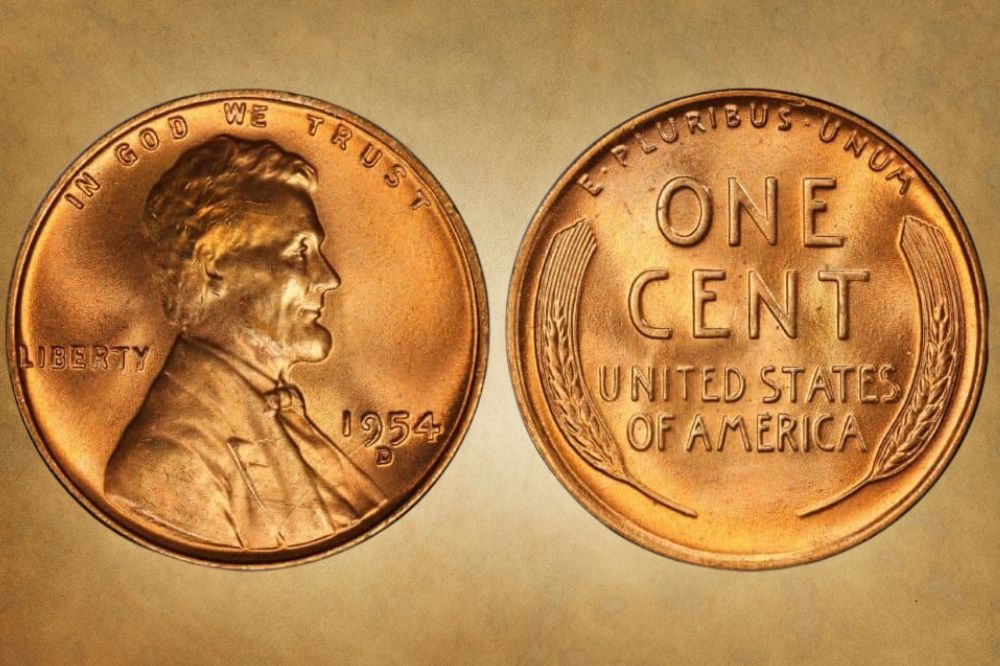
1954 is one of the final years of the Wheat Cent before it was replaced by the Memorial Cent in 1959. By this time, the VDB drama had died down and the mint made do with Lincoln Cents although they were still a hassle to coin. The redesign of 1959 Penny was driven by the Sesquicentennial, not by trouble at the mint. Let’s assess the true 1954 Wheat Penny Value.
1954 Wheat Penny Value Chart |
|||||||
| Mint Mark | Good | Fine | Extremely Fine | About Uncirculated | Uncirculated | Mint State | Proof |
| 1954 (P) No Mint Mark Wheat Penny Value | $0.05 | $0.17 | $0.39 | $0.50 | $0.67 | $2.28 | $23 |
| 1954-S Wheat Penny Value | $0.05 | $0.05 | $0.13 | $0.22 | $0.56 | $1.13 | No S-Proofs |
| 1954-D Wheat Penny Value | $0.05 | $0.05 | $0.13 | $0.22 | $0.56 | $1.13 | No D-Proofs |
1954 Wheat Penny Value Guide
Numismatists – people who study and sometimes collect coins – are interested in mint marks because they can raise the value of a coin. These marks show which branch of the US Mint pressed that particular coin. They can also give you information about the coin since some mints are known for higher quality while others have a reputation for valuable errors.
1954 (P) No Mint Mark Wheat Penny Value
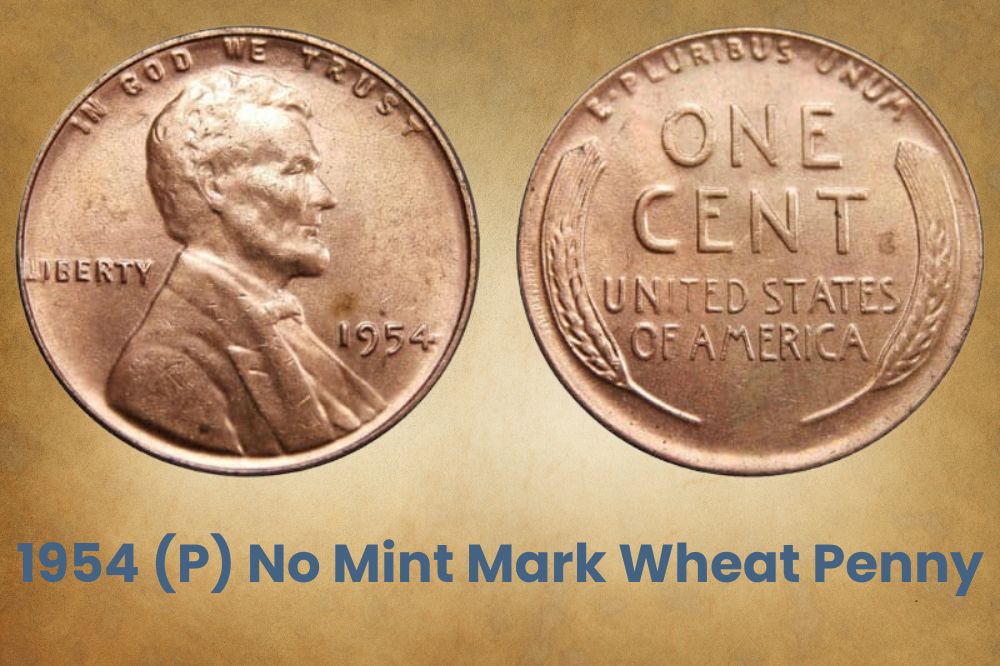
In 1954, the Philadelphia Mint made 71,640,050 Wheat Pennies and about 200K proof coins, but we’ll discuss the proofs separately. An MS 67 RD auctioned for $31,200 in January 2019. Four steps down, an MS 63 RB sold for $529. Brown coins in higher grades sometimes sell better than lower-grade RBs, so in December 2021, an MS 67 BN was $8,100 on eBay.
1954-S Wheat Penny Value
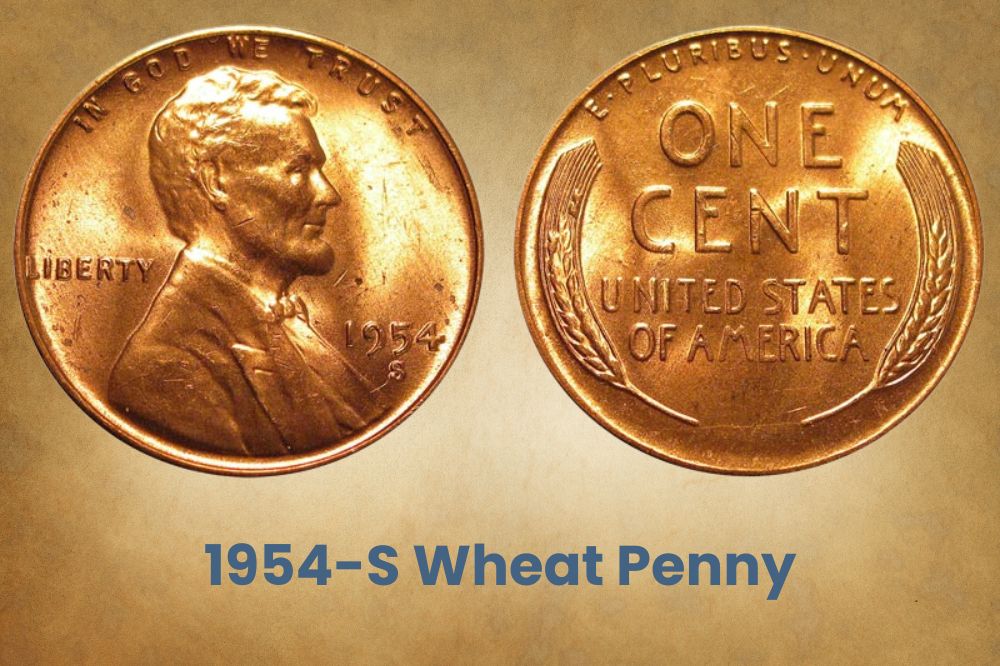
The San Francisco Mint pressed 96,190,000 Wheat Pennies. They all had the S Mint Mark, and the record auction price for an MS 67 BN was $500 in February 2021. But in September 2021, an MS 66 RB sold for much less at $185. An MS 67+ did better in August 2013 when it sold for $1,880. The current PCGS estimate for MS 68 is $15,000. They’ve only graded one.
1954-D Wheat Penny Value
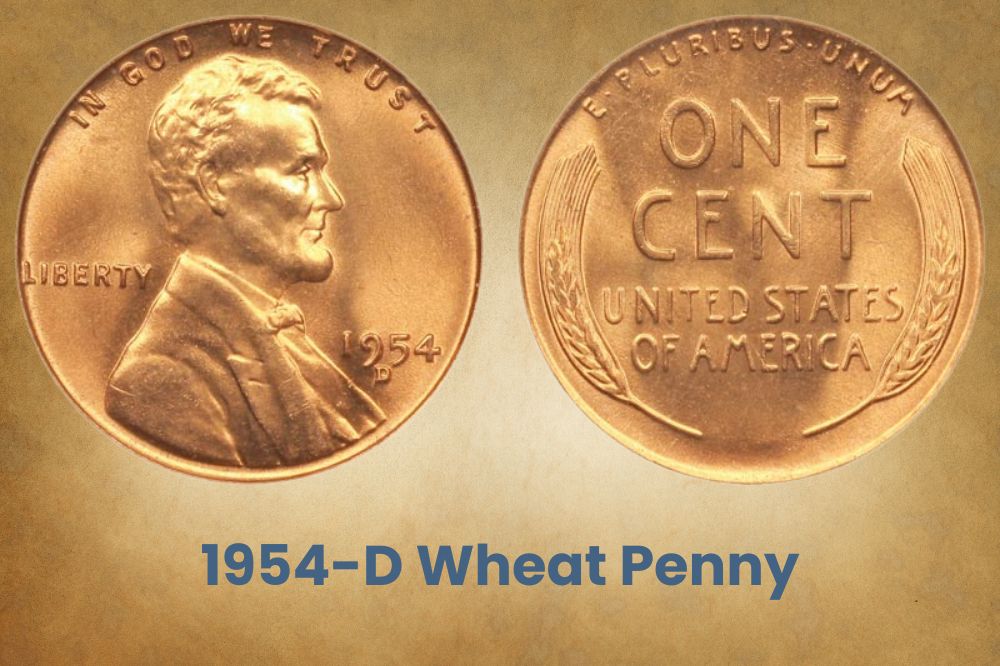
In 1954, the Denver Mint coined 251,552,500 Wheat Pennies with the D Mint Mark. The record sale for an MS 63 BN was a while back. It only sold for $403 in February 2005. An MS 66 RB wasn’t much higher, selling for $395 in September 2020. But in the highest color grade, an MS 67+ RD sold for $7,638 in February 2015. Its current PCGS estimate is $1,200.
1954 (P) Proof Wheat Penny Value
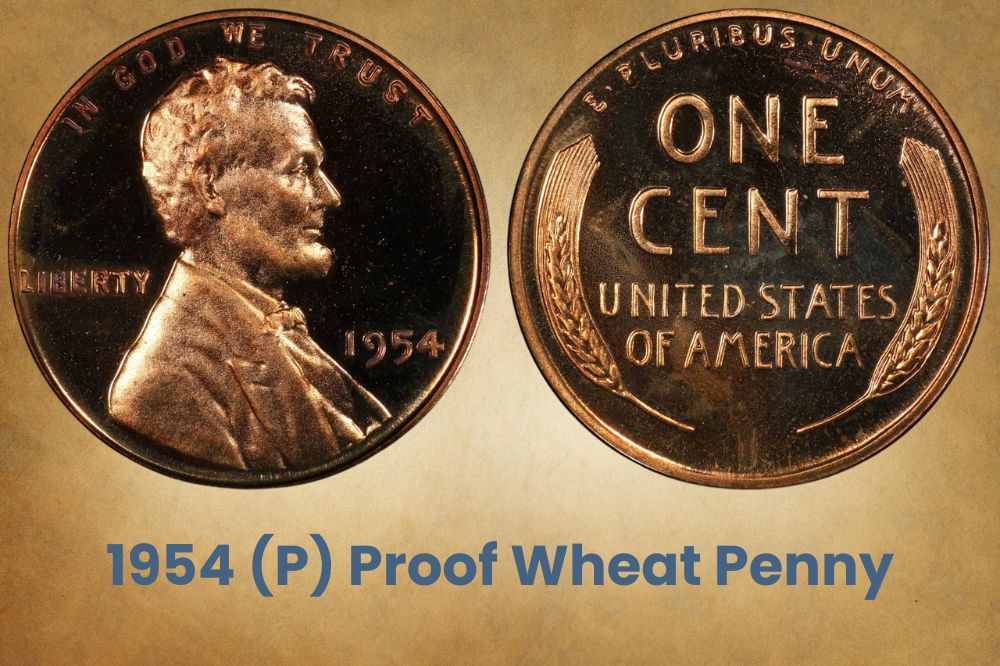
Not all shiny coins are proof coins. Some are satin-finish coins, which are picked out of coin vats and sold to collectors as Uncirculated Sets. These might be graded as PL for Proof-Like or DPL for Deep-Proof-Like, meaning there’s a deep contrast between the device and the field. Or they might be Special Mint Sets (SMS), coins that get struck only once at high pressure.
To qualify as proofs, a coin must be struck on a specially burnished planchet. These planchets are polished before striking by tumbling them in a vat full of stainless steel balls then rinsing them off. The proofs are then struck with specially treated proof dies. The proof die fields are scrubbed with horsehair brushes to match the mirror-like shine of burnished planchets.
To get the hazy effect on the devices, the die is either pickled in acid (up to 1970) or etched with a computerized laser. Acid pickling fades with every strike, so the first 50 to 100 of the shiniest coins are graded Deep Cameo (DCAM) by PCGS or Ultra Cameo by NGC. The next hundred or so are Cameos and the rest are regular proofs. But not all proofs are mirror-like.
Understanding Mirror-Like Proofs and Matte Proof Coins
From 1909 to 1917, the mint made matte proofs in the French style. It was a necessary move because beautified coins like the Lincoln Wheat Penny had higher points of relief and extra curves which made it hard to polish dies. Instead, the US Mint used a technique perfected at the Paris Mint. They sandblasted the dies to give coins a gorgeous grainy, matte appearance.
To prevent these matte proofs from tarnishing, they were stashed in special sulfur-infused tissue paper before being sold to collectors. Over the years, this packaging gave some matte coins distinct toning. This wasn’t an anticipated side effect, but it can give coins more value! The original purpose of proof coins – matte or reflective – was to ensure dies were accurate.
So a copy always stayed in the archives and some were sent to museums. In 1954, the proof coins were mirror-like, and the Philadelphia Mint made 233,300. NGC grades them PF while PCGS grades them PR. A PR 69 RD was $1,410 in January 2013. A PR 68 CAM was $2,938 in January 2011. A PR 68 DCAM was $14,950 in May 2012 and $11,750 in September 2021.
Related Posts: 16 Most Valuable Wheat Penny Errors
1954 Wheat Penny Errors
To make a coin, the designer first produces an 8” model with plaster, rubber, and epoxy. The mint reducing machine will cut this down to size over the next few days. They’ll make the steel master hub which makes the master die. The master die makes working hubs which make working dies. The mint mark is added to the working die before it strikes planchets.
Until 1989, these mint marks were added by hand, but after 1990 this was done by machine. All these stages – hub, die, mint mark – involve multiple strikes, and if the metal moves between strikes, you get doubling or tripling errors like RPMs, DDOs, TDRs, off-centers, etc. Some of these mint mistakes can be quite valuable, so let’s check out the priciest coin errors.
1954 Wheat Penny RPM Error
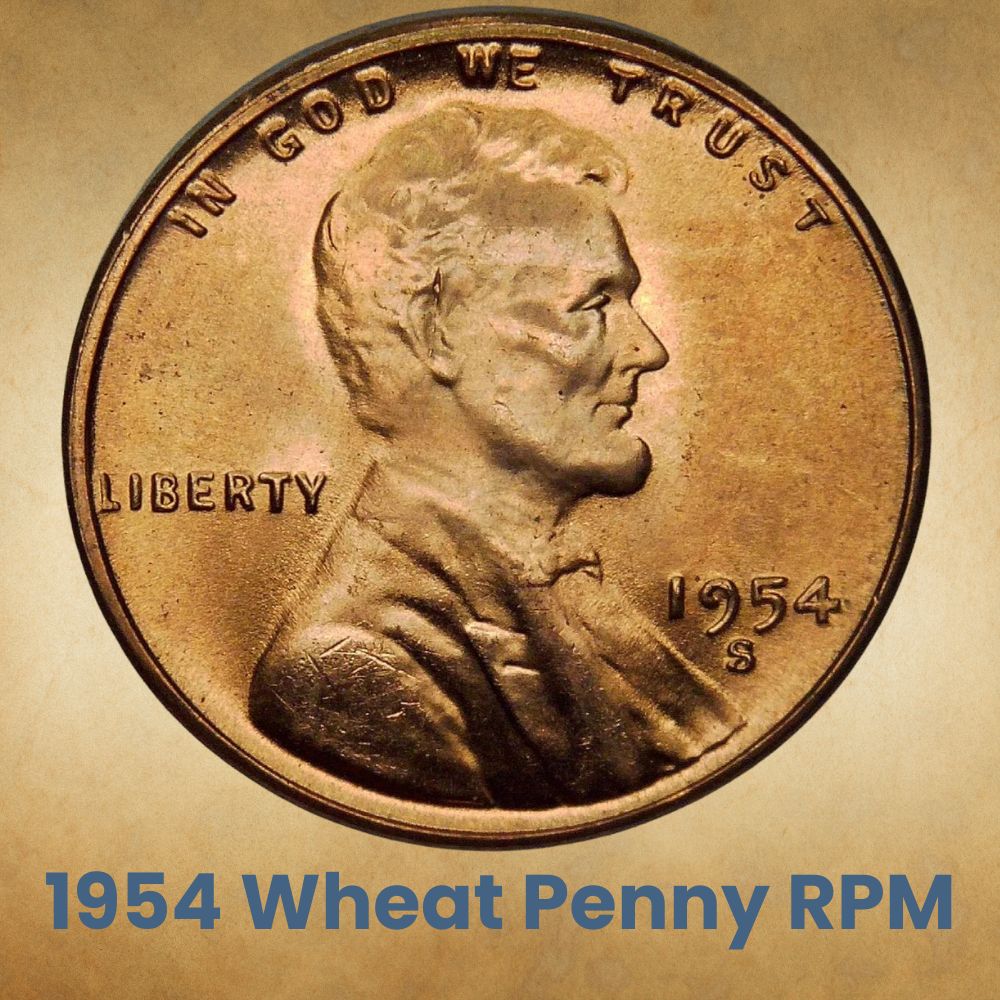
RPM means re-punched mint mark. It’s a doubling error where subsequent mint marks hit a slightly different spot so you see traces of the first one underneath. RPMs are written as D/D (D over D) or S/S based on the mint mark. An S/S only sold for $14 in MS 64 RD, but a D/D MS 65 BN was $86 in February 2018, and a D/D MS 64 RD was $154 in February 2012.
1954-D Wheat Penny D/D/D RPM Error
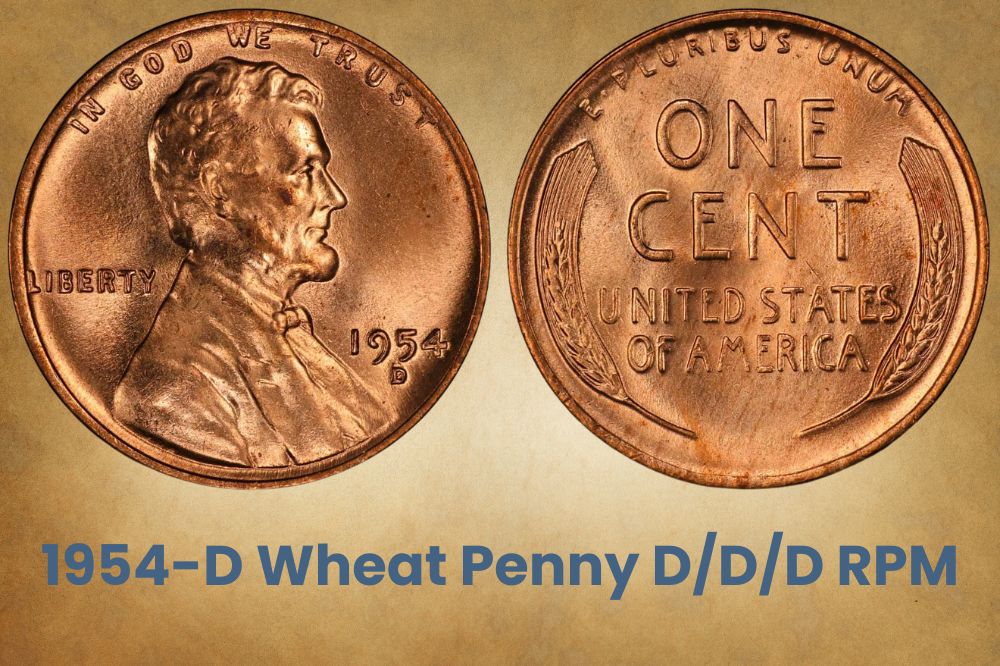
On the previous RPM Wheat Cent, there were only two Ds, but on this one, you’ll see three Ds so it’s a tripling error. It’s an FS or First Strike error, meaning it was discovered within 30 days of the coin’s original release. In MS 63 BN, this 1954 D/D/D Penny sold for $68 in June 2017. An MS 66 RB was $152 in April 2021. And an MS 66 RD sold for $300 in June 2018.
1954 (P) Wheat Penny Doubled-Eye DDO Error
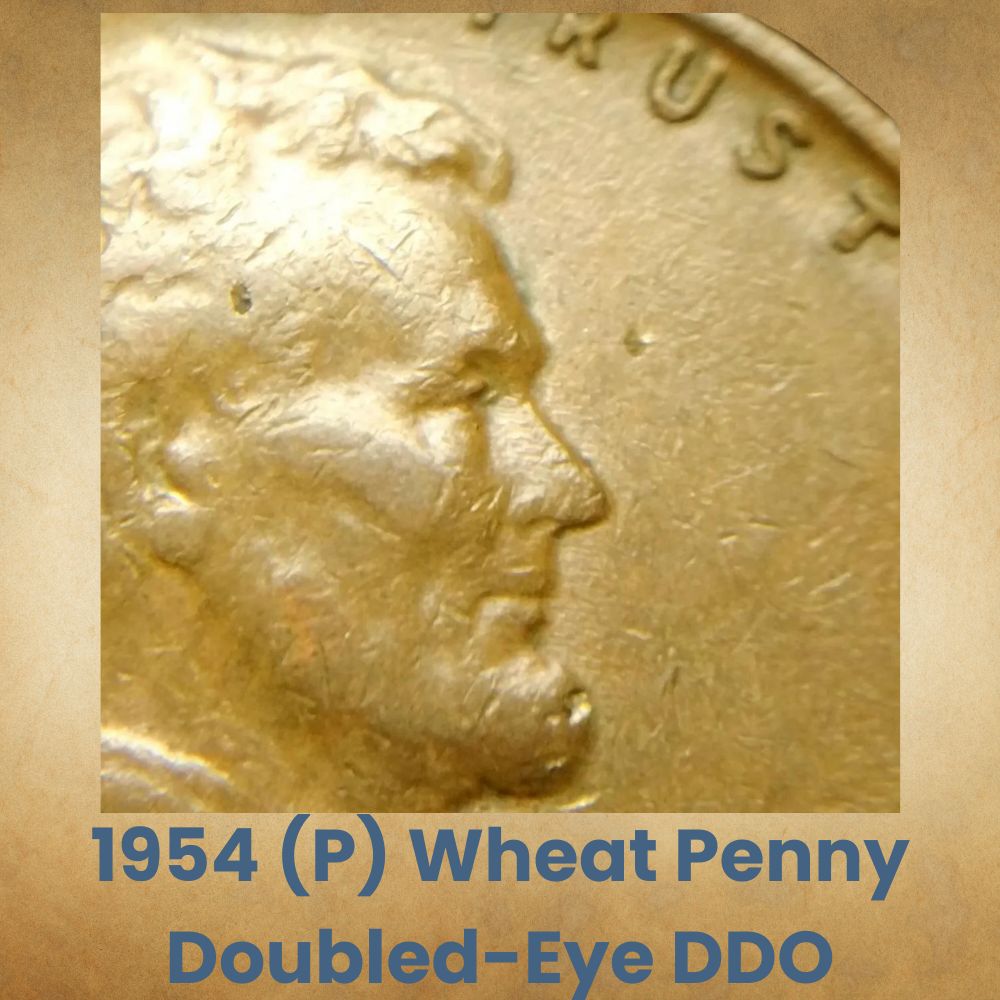
DDO means doubled-die obverse. It happens when the die shifts between hub strikes, so the second impression doesn’t land on the same spot as the first one. On Lincoln Cents, this is often a doubled-eye error, pun intended, because you can spot the doubling on Lincoln’s eyelid. It’s not a pricy error though – only $3.50 in AU 53 and maybe $12 in MS 65 grades.
1954 (P) Wheat Penny DDO Date Error
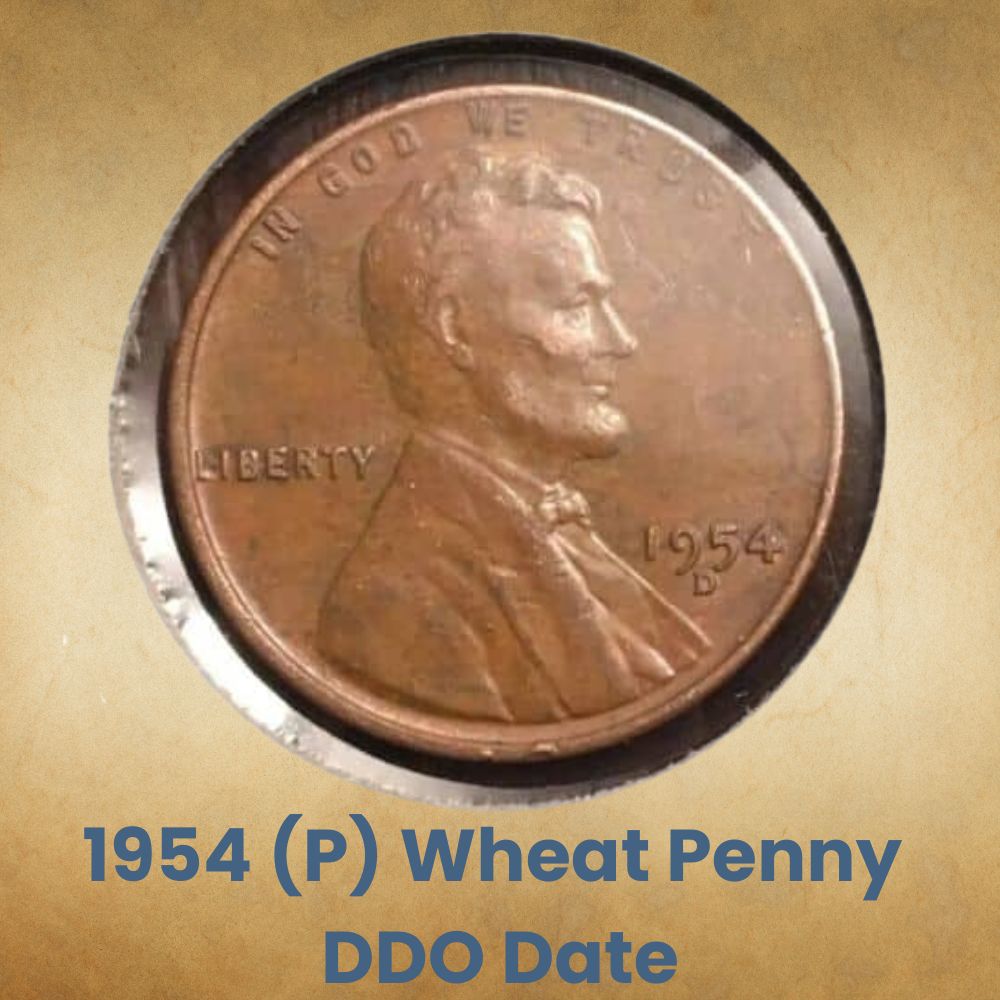
If you have a coin microscope or jeweler’s loupe, you should check the words and numbers on your coins. They’re often the most visible spot to find doubling or tripling for coins in all denominations. On Wheat Cents, you can get a doubled-eye or doubled-ear, but a doubled date is far more visible and way more common. They’re $6 in AU 53 and $28 in MS 65 RD.
1954 (P) Wheat Penny 15% Off-Centre + 15% Double Clip
Coins that have multiple errors generally cost more. And when the planchet shifts before the first die strike, you might get an off-center error that leaves part of the coin blank. Some of the coin’s design details might also get sliced off. This coin has an off-center on the right, plus the coin got chopped at two overlapping spots. Graded MS 65 RB, it was $340 in 2019.
1954 (P) Wheat Penny Broadstruck Error
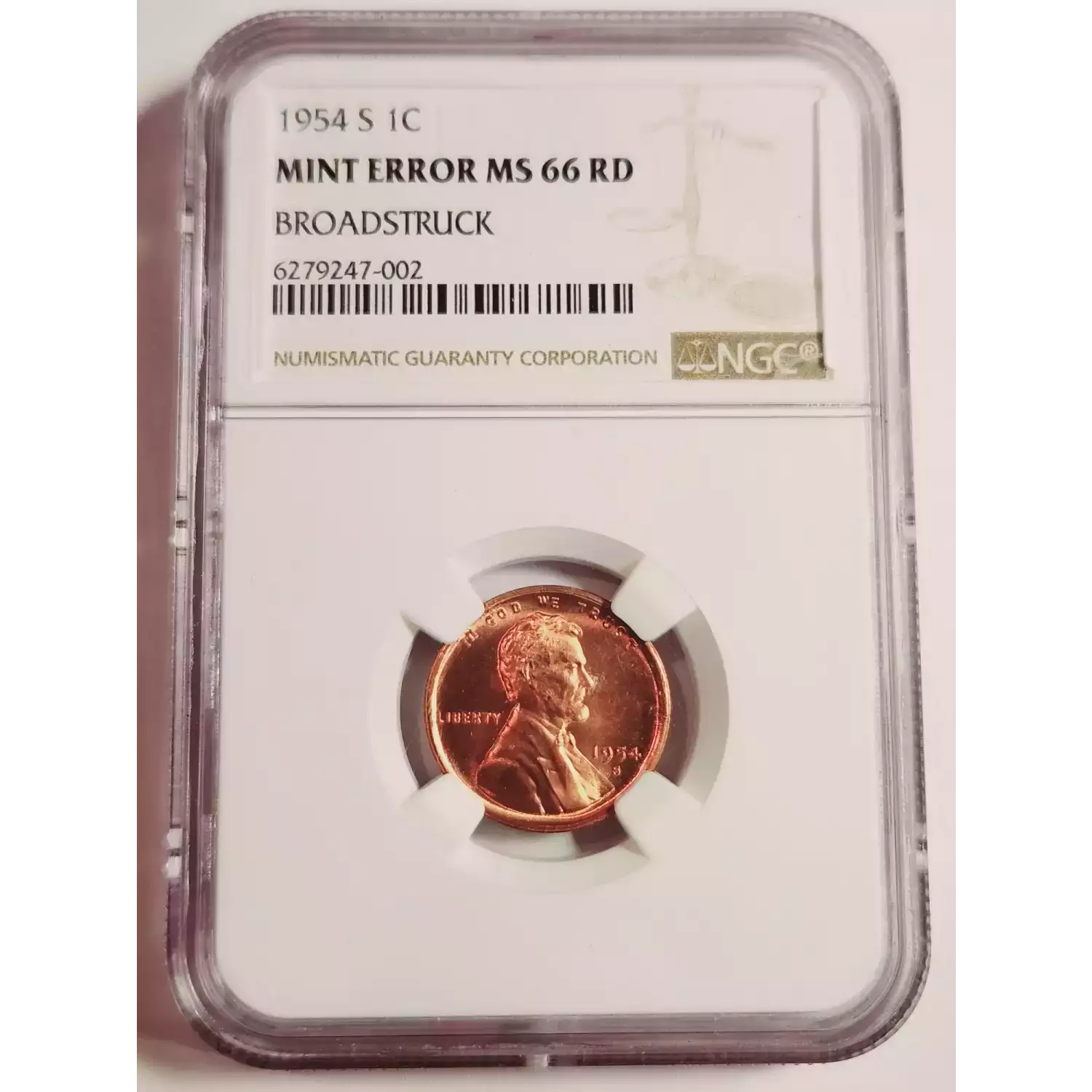
In the early days, coins didn’t have a standard diameter or thickness. It just depended on how hard the planchet was struck. But collars or rims were introduced in the mid-1760s to even things out. These collars are made with detachable 3-piece molds. If any of the 3 bits come off too soon, the coin comes out thinner. This broadstruck coin sold for $60 in 2021.
1954 (P) Wheat Penny Struck on a 10c Planchet
Planchet sheets arrive at the mint in massive coils which are then flattened and punched into discs using a blanking machine. Every sheet is made from a specific metal mix, then the discs are cut into the right size. So sometimes, a coin is struck on a planchet intended for another denomination. This penny was struck on a dime planchet, and it sold for $805 back in 2007.
1954-S Wheat Penny BIE Error
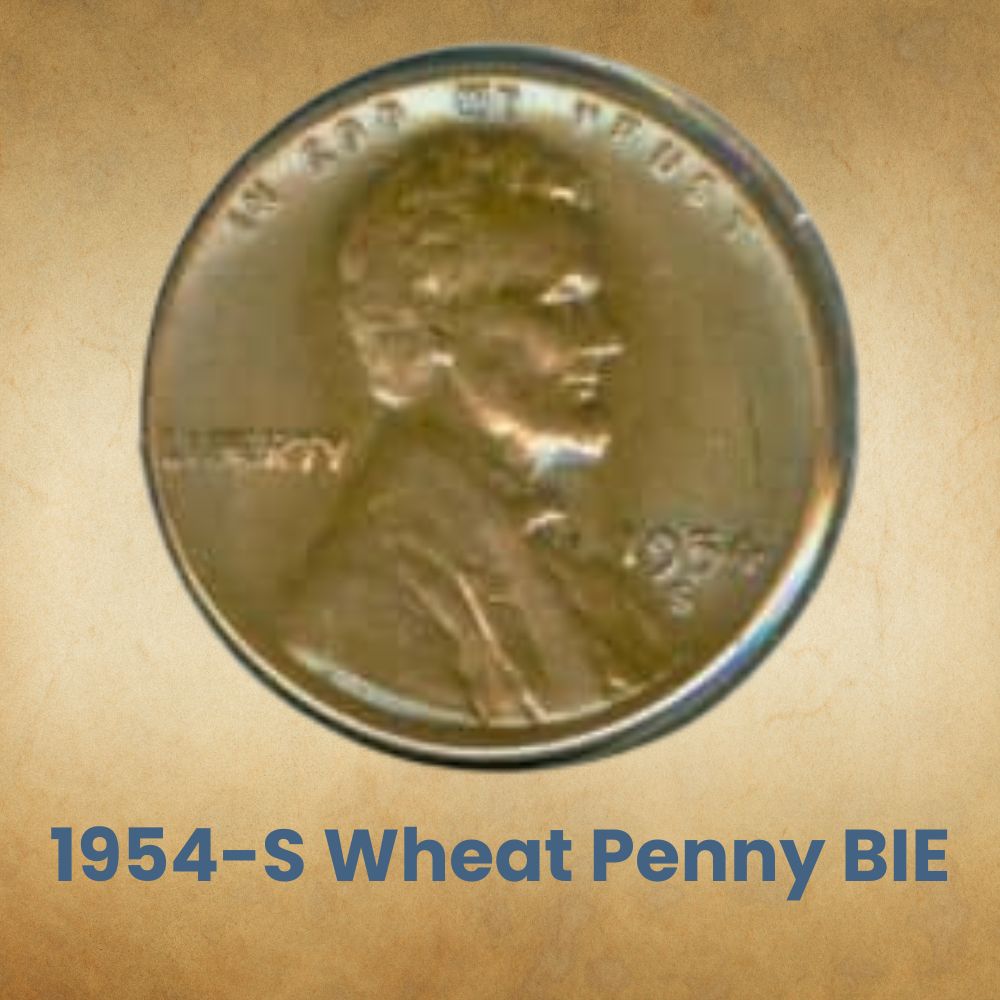
As dies get older, they might develop cracks or dents that get transferred onto coins. And since a single die can make thousands of coins, they will all have the same error and will be described as varieties. The BIE variety happens when a die slash imprints on the planchet, putting an ‘extra I’ between the B and E in Liberty. It’s not worth much, only $10 in MS 64.
1954-D Wheat Penny Double Strike with 2nd Strike 95% Off-Centre
If you see a coin graded D/S, it could mean two things. It might be an OPM or over-punched mint mark, meaning D was struck over an S. Or it could mean double-strike, where a coin got struck twice as it was exiting the coin press. In this case, the 2nd strike was 95% off-center so it deformed the coin. It’s a decently priced error. In MS 65 RD, this coin sold for over $140.
1954-S Wheat Penny Off-Centre Error
These next coins have off-center errors without the double-strike or the planchet clip, so let’s see how they measure up. The price of the coin will depend on how misaligned it was, as well as the grade of the coin itself. A 5% off-center on a coin graded UNC (unclear details) is only worth $40 but a finer coin struck 55% off-center and graded MS 62 RB is worth over $130.
1954 (P) Wheat Penny Die Cap Error
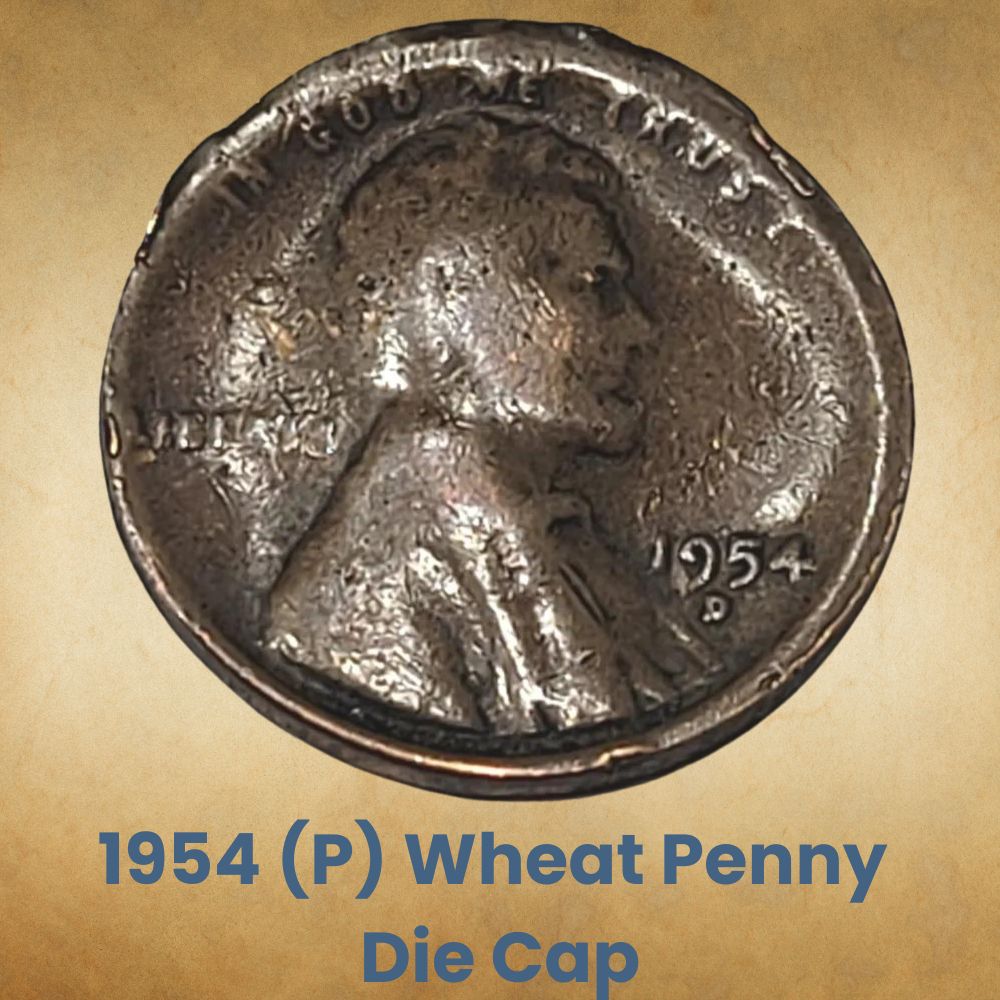
After planchets are punched into discs, they’re loaded into a coin hopper then fed into the coin press. Sometimes, a planchet jams in the feeder, blocking the next coin. So as the die strikes, it covers an already struck coin. This is called a die cap, and the obscured coin may end up with a blank or marred design on one side. In MS 63 RB, this error can sell for $90.
Related Posts: 19 Most Valuable Lincoln Memorial Penny Worth Money
History of the 1954 Wheat Penny
1909 marked 100 years since Abraham Lincoln’s birth and the public wanted him on a coin. This would be the first time a recognizable person appeared on a coin since earlier coins had symbolic images of Lady Liberty. Victor David Brenner was chosen for the task, and he was inspired by French silver coins. His first sketches included tree branches and Lady Liberty.
They looked a lot like the circulating French coins though, so Mint Director Frank A. Leach asked Brenner to simplify his designs and add United States of America, Liberty, E Pluribus Unum, and the coin’s denomination. The motto In God We Trust wasn’t on those earliest sketches. It was added by Chief Mint Engraver Charles Barber when he adjusted the design.
Barber tweaked the coin, leaving too much negative space at the top. He talked with Leach and they agreed to add the motto over Lincoln’s head. Brenner’s coins had his full surname on the front, which he was soon asked to change. The standard practice among in-house engravers was to place a small initial on the portrait cut-off, or hidden in Lady Liberty’s hair.
Brenner opted to place VDB at the back of the coin instead, and some coins were minted that way. But after the public and mint officials complained, the initials were scrubbed off the 1c and didn’t reappear until 1918, when they were positioned on the portrait cut-off, just like in-house mint engravers. The 1954 Wheat Penny uses this same style for the designer’s insignia.
Related Posts: 19 Most Valuable Wheat Penny Worth Money
How to Identify the 1954 Wheat Penny?
Sometimes, when people use technical terms, it can make you feel dumb for not knowing them. And in the coin space, jargon gets used pretty often, so we’ll help you understand the most important terms. Let’s talk about how coins are described. The blank discs are called planchets while the heads side is called the obverse and the tails side is called the reverse.
The thin sides for flipping are edges and the raised borders are collars or rims. The edges can be plain or smooth, without any decorative detail. Alternatively, they can have ridges called ribs. The rim sometimes has tooth-like beads called denticles. On the coin itself, the images are called devices and the words are legends or mottos. The backdrop is known as the field.
Hubs and dies are like the steel ‘rubber stamps’ that hit metal to make patterns. This is called striking or pressing. The hub strikes the die then the die strikes the planchet, but we’ll talk more about that when we discuss coin errors. For now, let’s look at the 1954 Wheat Penny. It’s color-graded as RD for red, RB for reddish-brown, or BN for brown, with red as the best.
The Obverse of the 1954 Wheat Penny
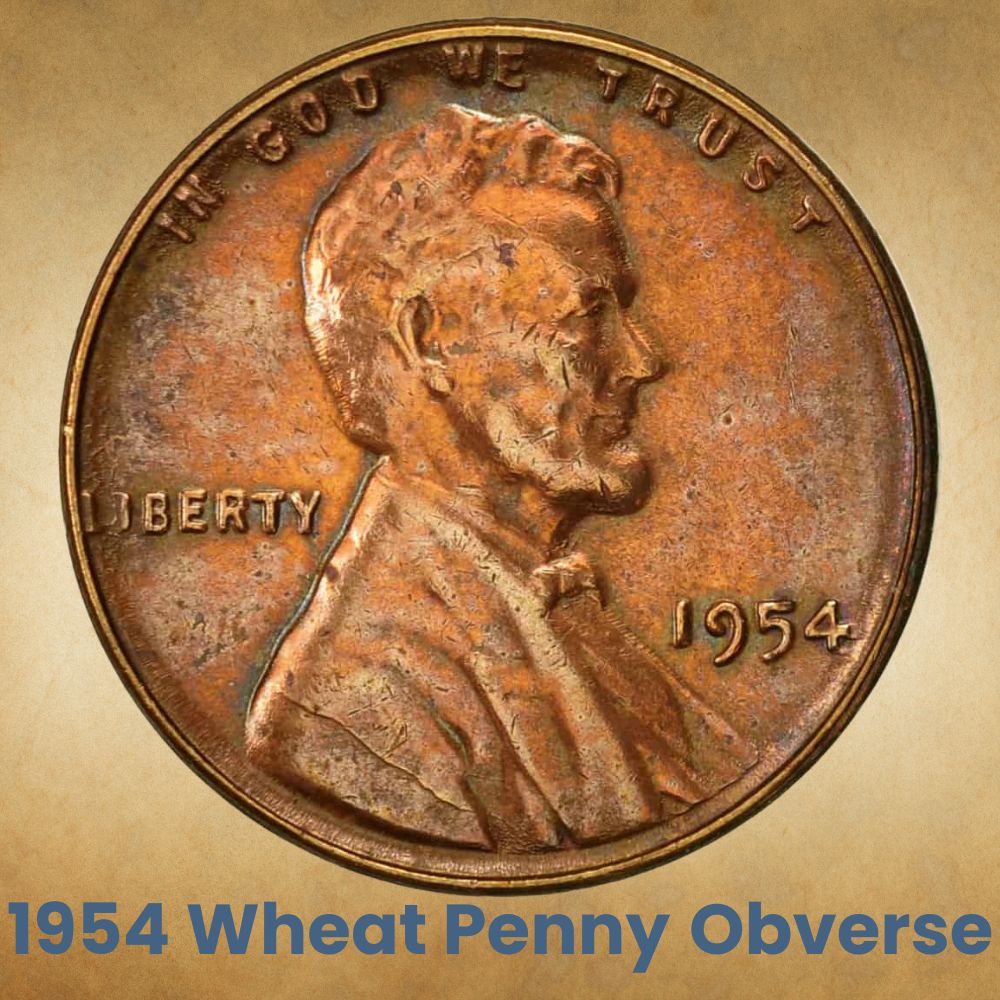
The obverse (heads side) of the 1954 Wheat Penny has a profile of Abraham Lincoln facing right. The designer derived it from his earlier work on a commemorative medal for Gorham Manufacturing in 1907. Above Lincoln’s head is the motto In God We Trust. The date and mint mark are in front of his chest. Liberty is behind him and VDB is on the shoulder cut-off.
The Reverse of the 1954 Wheat Penny
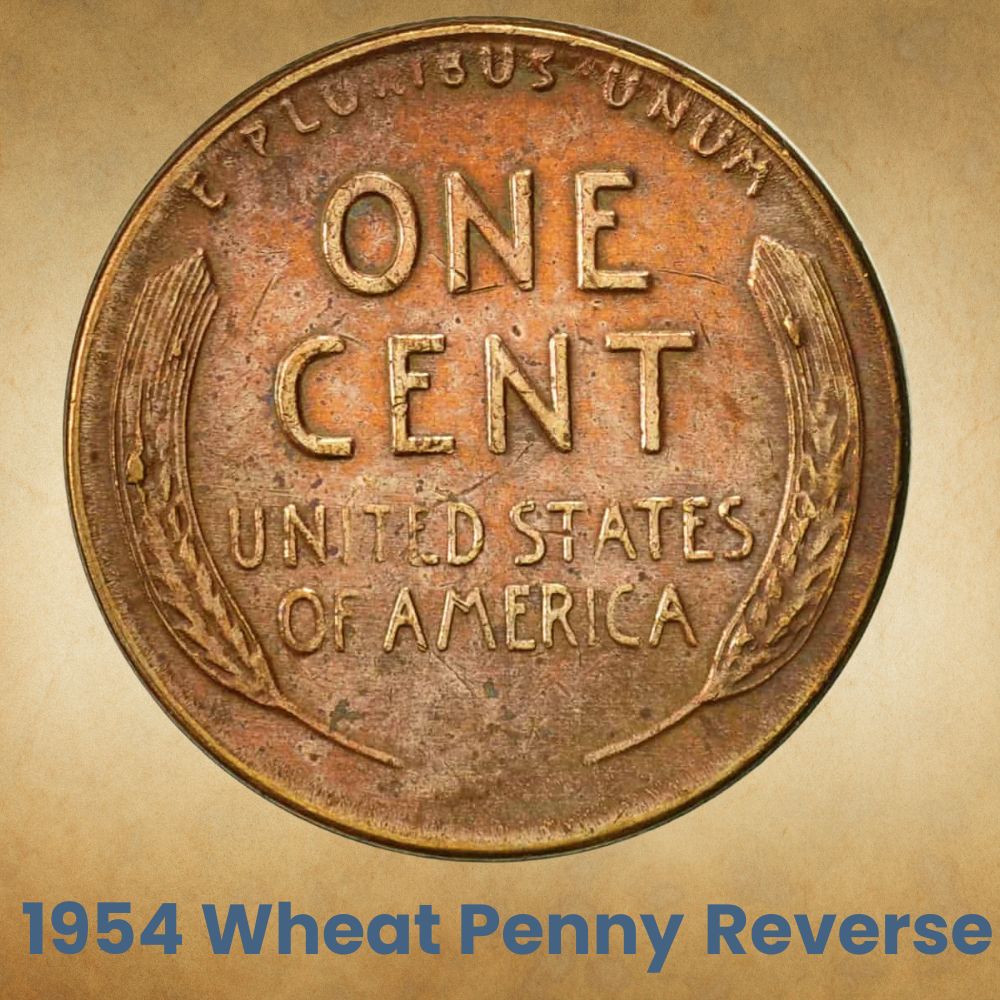
The reverse (tails side) of the 1954 Wheat Penny features a pair of durum wheat stalks that frame the sides of the coin. Earlier sketches had tree branches instead. Between the upper tips of the wheat is the motto E Pluribus Unum, with dots after E and Pluribus. Below that is the denomination, One Cent, in large font. After that is the legend United States of America.
Other Features of the 1954 Wheat Penny
Like all Wheat Cents, the 1954 Wheat Penny was 95% copper with the remainder in tin or zinc, sometimes both. It measured 19.05mm in diameter and weighed 3.11g. The obverse of the coin hasn’t changed since it first showed up in 1909 but the reverse has changed several times. The 1954 reverse is still the original one, but it’s among the latter ones that had VDB.
